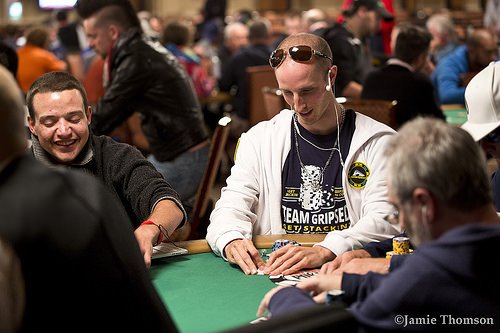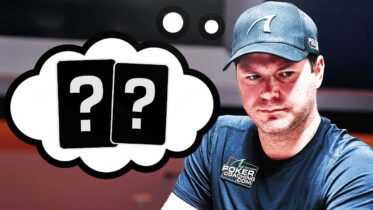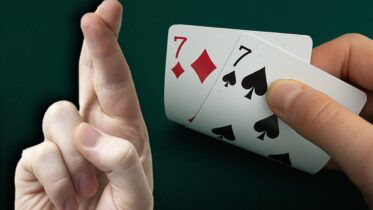Here’s a pre-flop strategy that’s often overlooked by newbs and even some more advanced players: stack size and its influence over how you should play your hand. In fact, your stack size is one of the most important factors in determining if your starting hand can be played profitably—even more important than starting hand selection.
Before we get into the nitty-gritty, let’s look at some stack size basics. To figure out your stack size, look to the big blind of the game and divide your stack by that amount. So, if you’re playing $2/$5 and you have $400, you have 80 big blinds.
The deeper your stack, the higher your implied odds are post-flop. For the same investment pre-flop, there’s a lot more you can win post-flop. This means drawing hands go up in value, because to get a lot of money in you want hands like flushes, straights, and full-houses. You want to be cautious about putting money in hands like overpairs, top pair-top kicker, or two pair when you have a lot of money behind to play.
Playing Super Deep Stacked (300+ Big Blinds)
Playing super deep stacked? Then suited aces and broadways go way up in value. If you get someone in a flush over flush situation where you hold the stronger flush, your equity (chances of winning the pot) are 100% unless someone has an out to make a straight flush on you, but otherwise, you’re looking at a guaranteed win.
Big pairs and top pair-top kicker hands should be played cautiously because rivers are where the majority of the money will usually go in, in those spots one pair will rarely be best.
Playing Very Deep Stacked (200+ Big Blinds)
If you’re playing very deep stacked (200+ big blinds) suited connectors and high suited hands go up in value. This is because the ability to make straights is stronger and the higher the rank of cards, the stronger the straight.
Playing Deep Stacked (~100 Big Blinds)
In this case, many starting hands can be played profitably, from big pairs to small pairs to suited connectors to suited gappers; it’s all about understanding what situations they will be profitable in and which spots they won’t be. To better understand this, you need to understand the triple threat, which you can learn about here.
Playing Shallow Stacked (40-60 Big Blinds)
Play big pairs and offsuit high card hands, since they go up in value because reverse implied odds (an estimation of how much you can expect to lose if you make your draw, but your opponent has a better hand) are no longer a huge deal. At this level, you can comfortably get it in with top pair or better on the flop. If you get beat, it’s a cooler and you can get it back because it’s only 40-60 big blinds.
Small pairs and suited connectors lose value because you have fewer chips behind you and it’s harder to draw out on someone. I don’t recommend playing these when you’re shallow stacked.
Playing Very Shallow Stacked (~20 Big Blinds)
Any pair or big cards are valuable because you’re going to be going all in. A 40-50% chance of winning is all you need. Avoid all others unless you’re on the button and have to play.
A little accounting for stack size will go a long way to creating more lucrative play. Keep your eyes on your stack, and change your strategy as your stack dictates.



